Want to hike Hallasan in winter and see snowy slopes sliding down into sparkling seas below? Up to the challenge of hiking Korea’s highest mountain and volcano? Not sure if you’re ready for this difficult, rewarding hike in open country, through deep snow, and along daunting drops? Find out if hiking to Hallasan’s snowy peak is something you can do this winter.
This guide to hiking Hallasan in winter will help you with all you need to get ready for the tough, but rewarding hike to the peak. Featuring tips on what to wear, what to pack, how to prepare, and loads of other essential tips, you’ll be ready to go out and reach the peak after you read this.
Whether you’re a seasoned hiker, or ready for your first summit, there’s a lot to know and prepare to hike Hallasan in winter. Have you made a reservation? Do you know which bus to take there and back? What will you eat after the hike? Find out all that and more below.
Affiliate Disclaimer: This site contains affiliate links and I may earn commission for purchases made after clicking these links.
Why Should You Hike Hallasan In Winter?

Winter in Korea is a great time to go hiking. Standing knee-deep in snow, catching your breath as the snow dazzles all around, sunbeams bouncing off the crystalline seas that surround Jeju – it’s a view not to be missed.
Hallasan Mountain is South Korea’s highest peak and offers breathtaking views that you won’t see from any other mountain in Korea. You get the chance to look out over the egg-white of Jeju Island’s lowlands as you stand atop its volcanic egg-yolk peak.
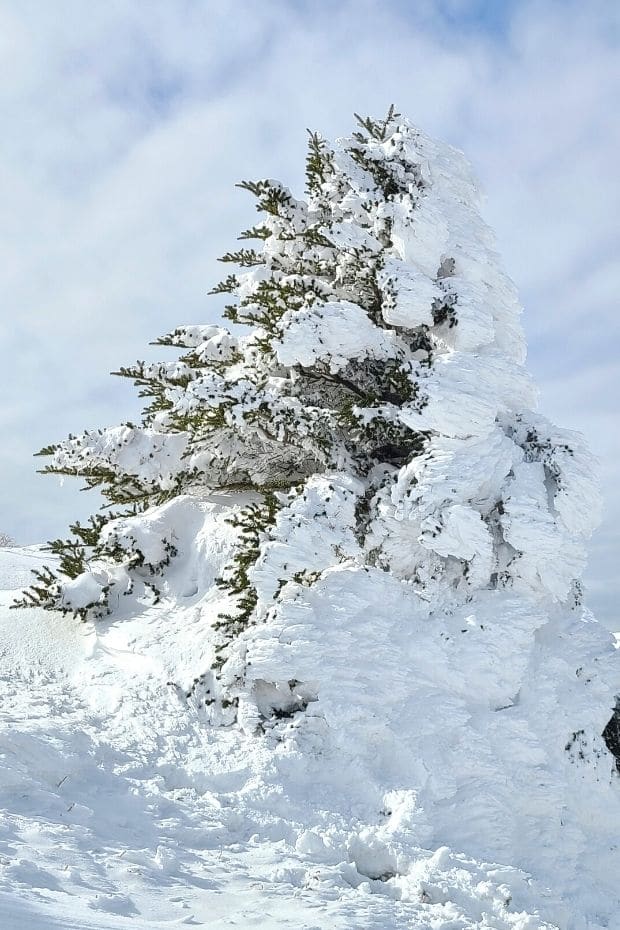
There are so many reasons why you should hike Hallasan in winter. Snowy landscapes, the chance to escape the city, a great workout, reconnecting with nature, or to see the whole of Jeju Island from atop South Korea’s highest mountain. Take your pick.
For me, the number 1 reason to hike Hallasan Mountain in winter is the fresh white snow. I’m a big kid at heart and there’s something uplifting and energising about pushing my feet along snowy pathways, having snowball fights, and seeing snow cover everything.

Whatever reason you choose, you won’t be disappointed by the end of it. The feeling from accomplishing a challenging hike like this is matched only by the contentment you get from devouring a delicious meal afterwards.
I would recommend trying out Jeju’s black pork samgyeopsal (Korean BBQ) and a bottle of the island’s own soju, aptly called Hallasan. It’s the perfect end to the day and guaranteed to help you into a long sleep that night.
Hiking Hallasan in winter is one of those South Korea bucket list activities that you should definitely attempt if you’re visiting Korea in winter. Whether you’re an accomplished hiker or novice, there’s a hiking route that will be right for you and allow you to see amazing sights.
In this guide I’ll tell you all you need to know to hike Hallasan in winter, including how to prepare for the hike (very important), what to expect, and tips for Jeju Island and hiking in Korea.
Planning to visit Korea? These travel essentials will help you plan your trip, get the best deals, and save you time and money before and during your Korean adventure.
Visas & K-ETA: Some travellers to Korea need a Tourist Visa, but most can travel with a Korean Electronic Travel Authorisation (K-ETA). Currently 22 Countries don’t need either one.
How To Stay Connected: Pre-order a Korean Sim Card or a WiFi Router to collect on-arrival at Incheon Airport (desks open 24-hours). Alternatively, download a Korean eSIM for you travels.
Where To Stay: For Seoul, I recommend Myeongdong (convenient), Hongdae (cool culture) or Gangnam (shopping). For Busan, Haeundae (Beach) or Seomyeon (Downtown).
Incheon Airport To Seoul: Take the Airport Express (AREX) to Seoul Station or a Limo Bus across Seoul. Book an Incheon Airport Private Transfer and relax to or from the airport.
Korean Tour Operators: Tour companies that have a big presence in Korea include Klook, Trazy, Viator, and Get Your Guide. These sites offer discounted entry tickets for top attractions
Seoul City Passes: Visit Seoul’s top attractions for free with a Discover Seoul Pass or Go City Seoul Pass. These passes are great for families and couples visiting Seoul – you can save lots.
How To Get Around: For public transport, grab a T-Money Card. Save money on Korea’s high speed trains with a Korea Rail Pass. To see more of Korea, there are many Rental Car Options.
Travel Money: Use money exchanges near Myeongdong and Hongdae subway stations for the best exchange rates. Order a Wise Card or WOWPASS to pay by card across Korea.
Flights To Korea: I use flight comparison sites such as Expedia and Skyscanner to find the best flights to Korea from any country. Air Asia is a good option for budget flights from Asia.
How To Learn Korean: The language course from 90 Day Korean or Korean Class 101 both have well-structured lessons and lots of useful resources to help you learn Korean.
What To Prepare Before Hiking Hallasan
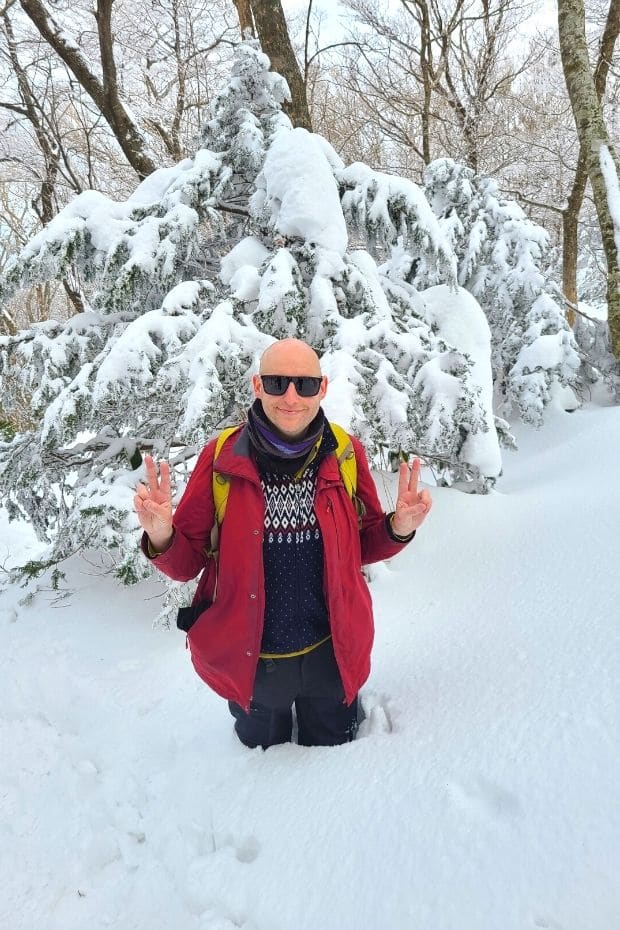
Hallasan is one of Korea’s most popular mountains for hiking, with winter being an especially busy time as everyone wants to go out and see the snow. To avoid disappointment on the day of your hike, there are a few simple things you can do to prepare.
The following 5 steps will help you plan and prepare your winter Hallasan hike. I’d recommend doing these things at least 1 week in advance, further ahead if you need to make a reservation for a hiking course.
1: Choose Your Hiking Trail
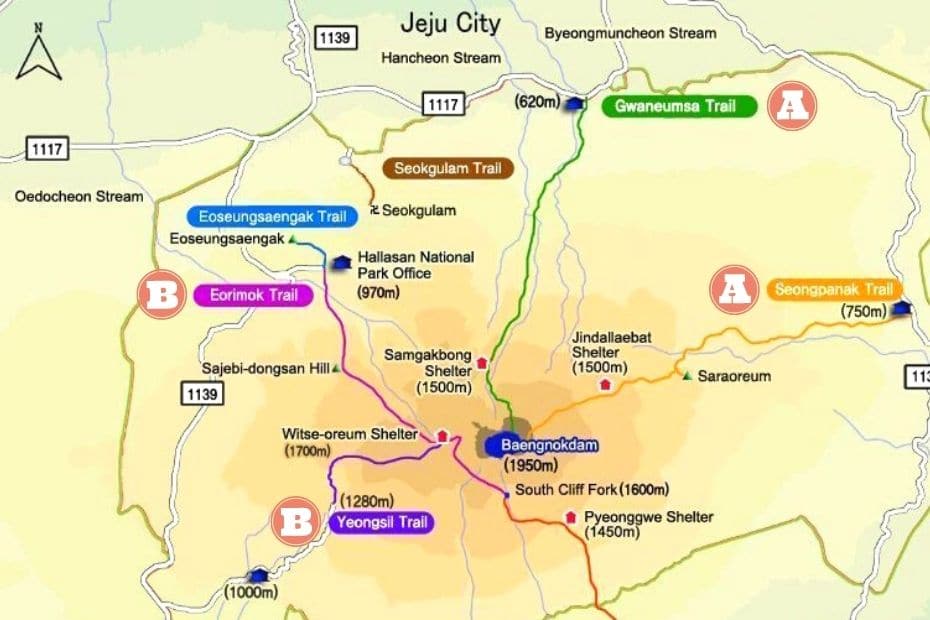
The first thing you’ll need to do is choose your trail. Do you want a short or long trail? Do you want to go up and down the same trail, or hike different trails?
There are technically 7 hiking trails on Hallasan Mountain, but I’ll only cover the 4 trails that go near the peak, broken down into pairs. These trails offer the best sights and the best snow hiking experience.
Gwaneumsa & Seongpanak
These trails take you to the highest point of Hallasan Mountain. They offer a longer, steeper, and more difficult hike. Recommended for intermediate-advanced hikers, but can be done by beginners with preparation.
Eorimok & Yeongsil
These trails take you to the back-side of the peak. They are shorter trails that are easier to hike. Recommended for beginner-intermediate hikers.
I’d recommend ascending one trail and then descending the opposite trail. This way you’ll get to see more of Hallasan and Jeju Island from different angles.
Here’s a brief overview of each course:
Gwaneumsa Trail
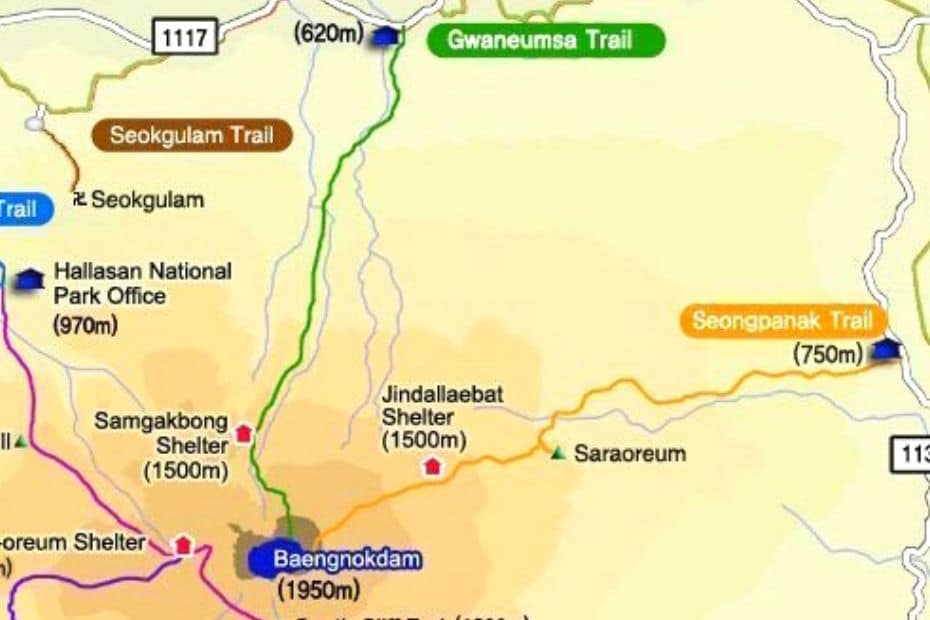
One of the most scenic courses, but also steep and difficult to climb. Starts in the north and easy to get to from Jeju City. I’d recommend descending this route after ascending the Seongpanak Trail.
Length: 8.7km (one way)
Time: 8-10 hours (return)
Difficulty: 4/5
How To Get To Gwaneumsa Trail
Take bus #281 from Jeju Intercity Bus Terminal (heading to Seogwipo) for 25 mins and get off at Jeju University. Then, take the bus #475 for 15 minutes. Get off at the entrance of the Gwaneumsa Trail.
Seongpanak Trail
A long and lovely course that rises gradually from the east. As you’re hiking east to west, the sun will be behind or above you most of the time, which is helpful. There’s a shelter half-way up where you can get ramyeon and rest.
Length: 9.6km (one way)
Time: 7-9 hours (return)
Difficulty: 4/5
How To Get To Seongpanak Trail
Take bus #281 or #181 from Jeju Intercity Bus Terminal (heading to Seogwipo) for 40 minutes. Get off at the entrance to the Seongpanak Trail.
Eorimok Trail
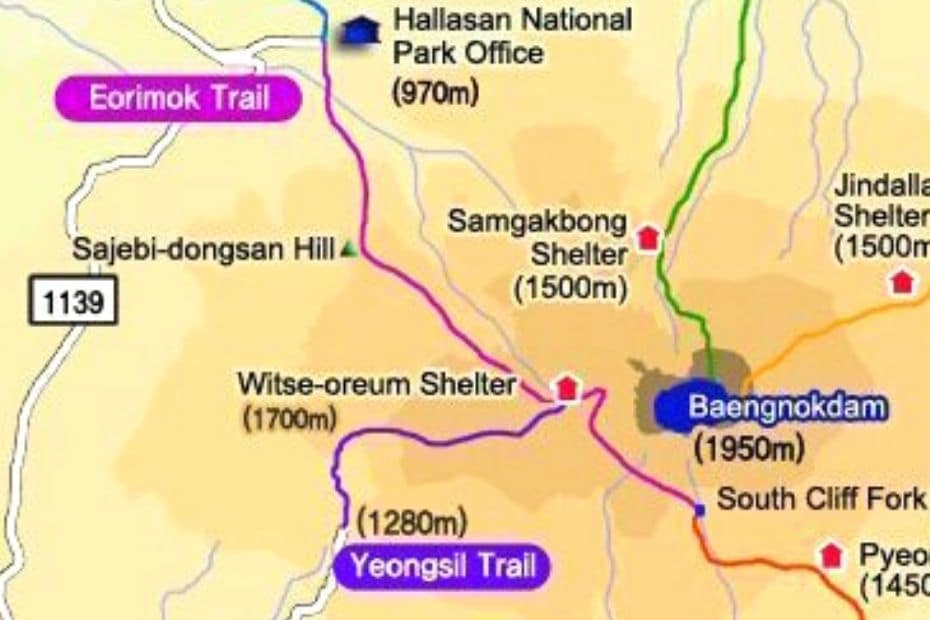
This trail offers a good trek that, although hard at first, isn’t that tough overall. After ascending quite quickly, the course levels out, revealing lovely views over the west coast and lots of oreums (volcanic cones). There’s a rest area at the top with toilets.
Length: 4.7km (one way)
Time: 3-4 hours (return)
Difficulty: 3/5
How To Get To Eorimok Trail
Take bus #240 from Jeju City Intercity Bus Terminal (heading to Jungmun) for 40 minutes. Get off at the entrance of the Eorimok Trail.
Yeongsil Trail

Although this course looks quite short, there’s a 2.5km walk from the bus stop to the course start. After that, this is a beautiful hike through snowy forests that turn into dramatic cliff-edges with scary-looking drops into the valley below. Don’t worry, the edge is fenced to protect hikers from falling down.
Length: 3.7km (one way)
Time: 2-3 hours (return)
Difficulty: 3/5
How To Get To Yeongsil Trail
Take bus #240 from Jeju City Intercity Bus Terminal (heading to Jungmun) for 50 minutes. Get off at the Yeongsil Ticket Office and walk to the trail entrance for 2.5km.
Which Course Should I Hike?
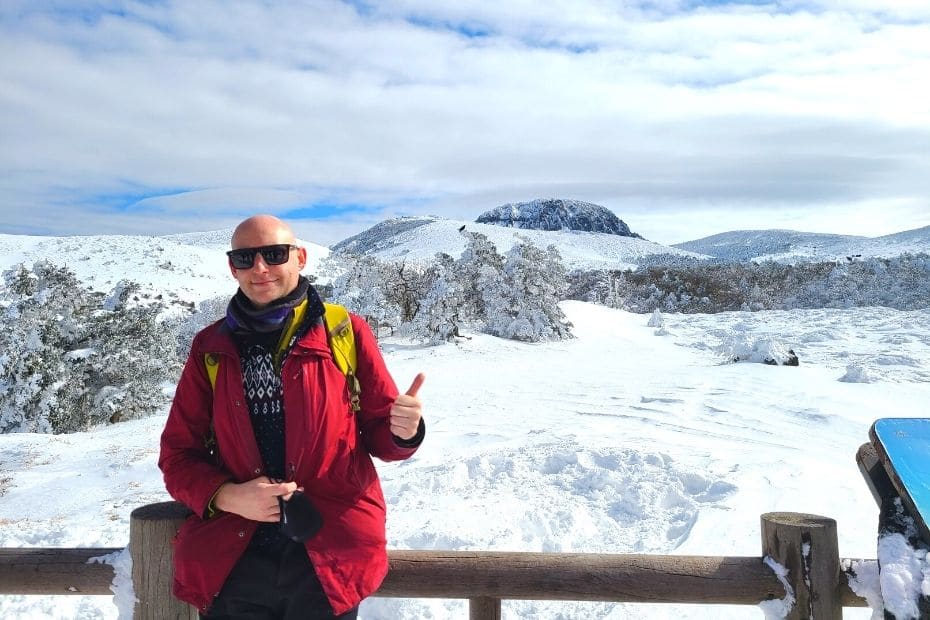
They’re all great courses, but I would recommend the following routes based on what you’ll see, the length of the course, and ease of public transport in either direction.
Long Hike – Start on the Seongpanak Trail, hike to the peak, then descend the Gwaneumsa Trail. It’s easier to get to the start point at Seongpanak and the Gwaneumsa Trail is closer to Jeju City, reducing travel time at the end. The Gwaneumsa Trail is steeper, so it’s best to go down this route.
Easier Hike – Start on the Eorimok Trail, hike to the back-side peak, then descend the Yeongsil Trail. It’s easier to get to the start point at Eorimok as it’s closer to Jeju City, meaning you can get a taxi if you miss the bus. The bus back to Jeju City passes Yeongsil before it gets to the Eorimok entrance, so you’ll have a much higher chance of getting on the bus back to Jeju City.
2: Make A Reservation

If you plan to hike the Gwaneumsa Trail or Seongpanak Trail, you need to make an online reservation, otherwise you will not be allowed access to the hiking trail. This is the same if you hike Hallasan in winter or any other season.
Online reservations can be made by the end of next month after opening on the 1st of every month. Here are some examples to show how that works.
February 1st:
Reservations can be made from February 1st to March 31st.
February 28th:
Reservations can be made between February 28th and March 31st
I’d recommend making a reservation as soon as possible. There are only 1,000 spots available each day and the available spots can go quickly, especially on weekends.
The button below will take you to the official Hallasan online reservation site.
You don’t need a reservation to hike the Eorimok Trail or Yeongsil Trail, so if you can’t make a reservation for the other courses, these will always be available. However, this also means that these courses have become more popular and therefore busier.
3: Check The Weather Forecast
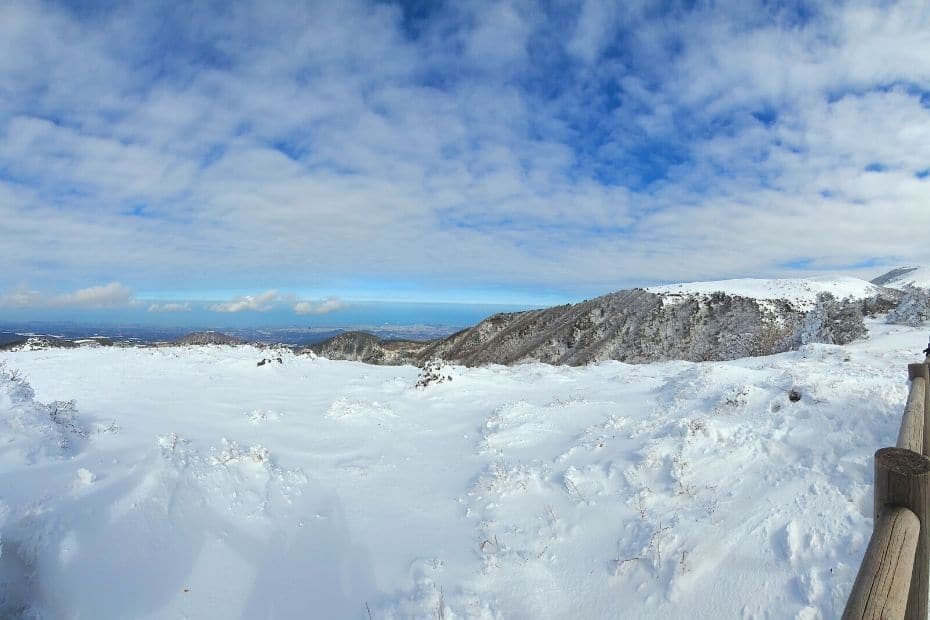
Jeju Island is a semi-tropical island and subject to sudden weather changes. The first time I hiked Hallasan in winter, the weather changed from partially cloudy to a strong blizzard that forced me to abandon my hike.
Check the weather a few days before and on the day of your hike, considering these things:
1: Is it snowing on your hiking day? If so, be prepared to hike with snow blowing in your face and possibly low visibility.
2: Has it snowed in the 2 days before you plan to hike? If so, you should have lots of fresh snow to walk through – which is good.
3: How strong is the wind on Hallasan? Even if the temperature isn’t that low, the wind can make it feel a lot colder and really hurt.
4: What’s the temperature on Hallasan? As you ascend to the peak, it will get several degrees colder. Be prepared and bring heat packs.
If in doubt, go to Google and type in ‘Hallasan weather’. You’ll see the weather for Hallasan for the next week, including wind speed, temperature, and expected snowfall.
4: Plan Your Transportation
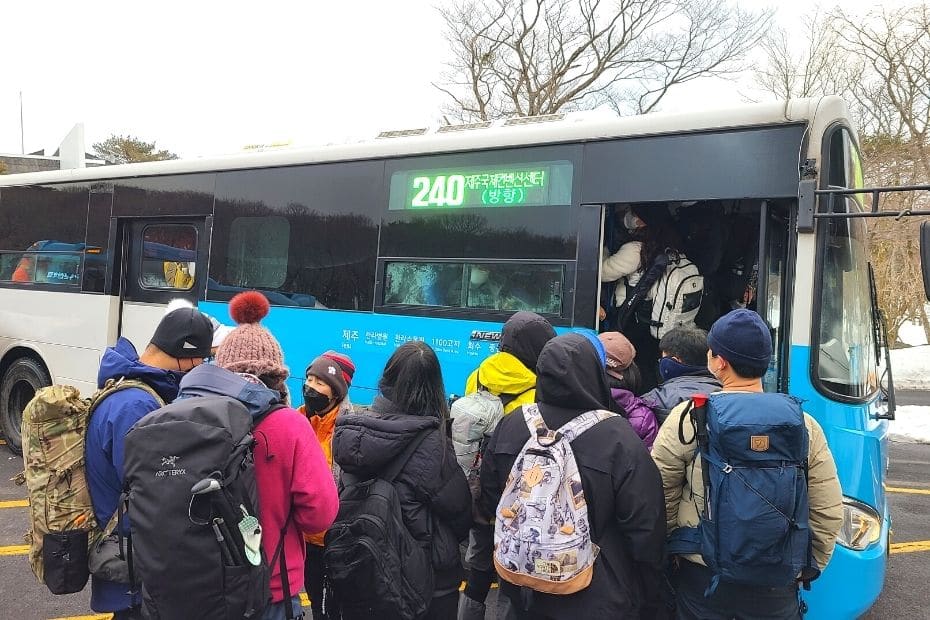
Whilst there are a lot of options for getting to and from Hallasan, the number of people hiking in winter means that you may have some unexpected transportation issues.
Here are some things to think about when working out transportation to avoid hassles on the day of your hike.
1: Buses are infrequent and busy. Buses to Hallasan run about once an hour. Which one will you take and when will you arrive / depart from the mountain?
2: Roads can be congested. If you’re driving, expect there to be traffic jams around the car parks as everyone tries to park there. The same goes for buses.
3: Take a taxi if you have to. The last time I hiked Hallasan, there wasn’t enough space on the bus, so I asked others at the bus station if they wanted to share a taxi. The taxi fee was about 20,000 won and well worth it!
4: The return buses will be busy. Work out when you will finish the hike and what buses will be available. Be prepared to queue for a long time before getting on a bus.
These are all especially true during the weekends, but might not be so bad during the week. Definitely hike mid-week if you can, it’ll make getting to and from Hallasan a lot easier.
5: Set Your Alarm Early

The biggest tip I can give if you plan to hike Hallasan in winter is to get up early. The hiking courses open around 6:00 am and that’s a good time to start your winter Hallasan hike.
Here are some reasons why you should try to rise with the sun:
1: There are time limits on when you can hike. You will be turned away from the hiking courses after a certain time as it’s too dangerous to start hiking then. You can see these times in the picture below.
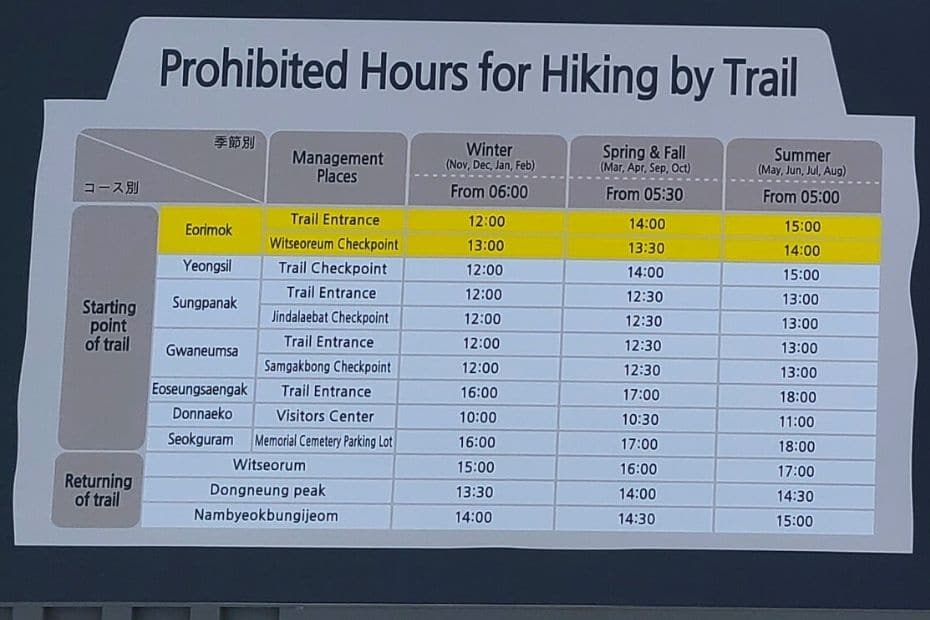
2: The roads get busier and busier. After 8:00 am, there are many people travelling to Hallasan or on the roads around Hallasan. Also, buses will be full of people and you might not be able to get on one (this happened to me last time).
3: You’ll have more time to enjoy the hike. You can pack a picnic and spend an extra hour or two taking in the incredible views.
4: Getting back will be easier. Return buses from Hallasan are also very busy. The sooner you finish the hike, the better your chance of getting on a bus back to the city.
You certainly don’t have to start hiking at the crack of dawn, but it will make it a lot easier. Try to aim to start the hike at 8:00 am if possible.
What To Wear To Hike Hallasan In Winter
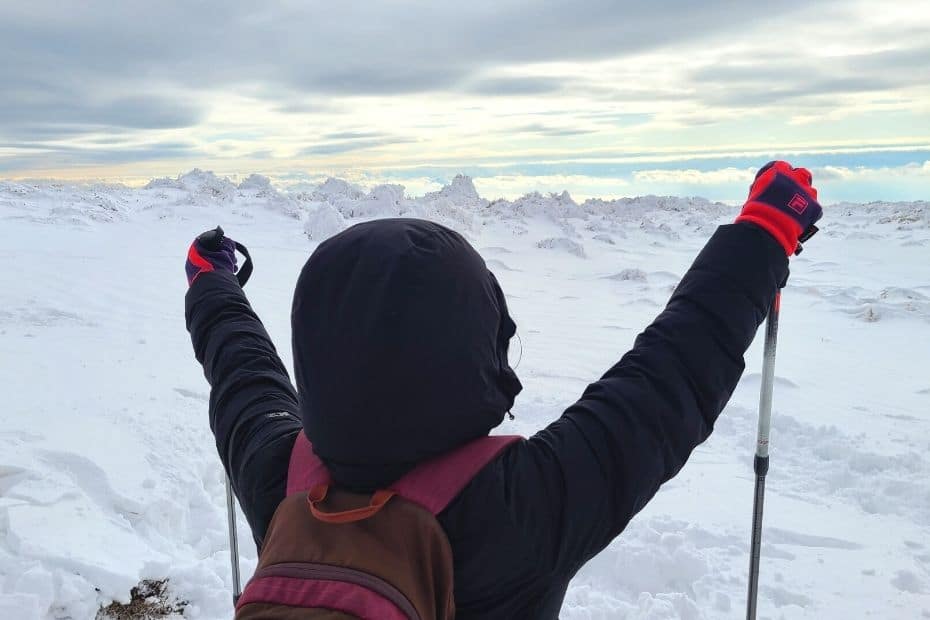
Wearing the right clothes is essential when hiking in the snow during winter. However, that doesn’t mean you need to spend a fortune on the latest hiking gear.
Here are some essentials that you should definitely wear:
Hiking Boots
A sturdy pair of hiking boots are a must for this hike. You will be crossing rocky, snowy, and icy terrain and you can sprain your ankle or slip over easily if you wear the wrong shoes. Also, hiking boots are usually waterproof and will keep your feet safe.
Here’s some Example Hiking Boots.
Thick Socks
Woollen hiking socks are good, but a couple of pairs of regular socks will do, too. These will stop your boots slipping and also stop your toes from getting too cold.
Here’s some Example Hiking Socks.
Thermal Inner Wear
If it’s windy, the cold will seep into your legs and arms very easily. Thermal inner wear (t-shirt and leggings) will keep your body warm and protected. Not essential, but very useful.
Here’s some Example Thermal Inner Wear.
Wind-resistant Hiking Jacket
You can wear as many fleeces, t-shirts, or jumpers as you need, but a good jacket is the key to staying warm and safe. Ideally water and wind-resistant, a hiking jacket should keep you warm without being too heavy. Try to avoid overly large puffer jackets as they’ll weigh you down and make your life harder.
Here’s an Example Hiking Jacket.
Hat, Gloves, and Neck-warmer
I wouldn’t travel in winter without these anyway, but they’re essential while hiking Hallasan in winter. The temperature will be below zero and you should cover up as much as possible.
As for other clothes such as trousers, jumpers, etc., I’d recommend warm and comfortable clothing. Wearing too many layers isn’t a good idea as you’ll get hot as you hike up and you’ll take them off anyway. A lightweight padded inner-jacket is a good alternative.
Personally, I wear the items I mentioned above with my hiking trousers, one t-shirt, and a fleece. The thermal inner wear and jacket keep me warm enough.
If you’re in Korea, I would recommend visiting Uniqlo for cheap and effective thermal clothes. For other items such as shoes and socks, visit a specialist hiking store.
What To Pack To Hike Hallasan In Winter 2025
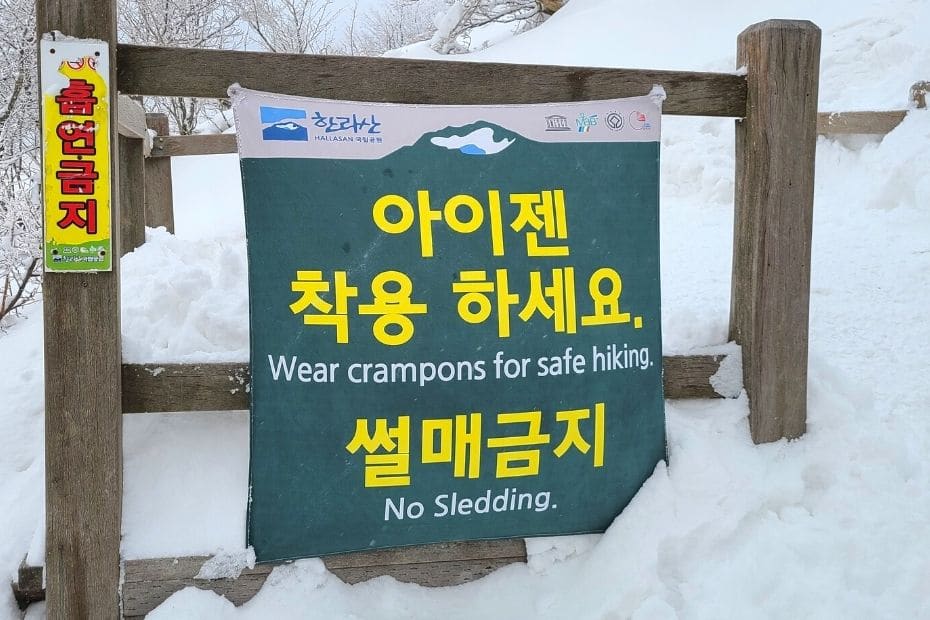
Staying warm and safe is more than just dressing correctly, there are also some other items you’ll need to pack. Here’s a quick rundown of some essential items to put in your backpack.
Hiking Poles
These adjustable hiking sticks will give you extra balance and help you get up and down rocky paths more easily. They’re also really useful for checking how deep the snow is. Not essential (I don’t use them), but definitely useful.
Here’s some Example Hiking Poles.
Crampons (Ice Cleats)
Crampons are metal spikes that go on the bottom of your shoes and stop you falling over on ice or snow. You basically can’t hike Hallasan in winter without them and you’ll have a hard time without a pair of these. These are called aijen (아이젠) in Korean.
Here’s some Example Crampons.
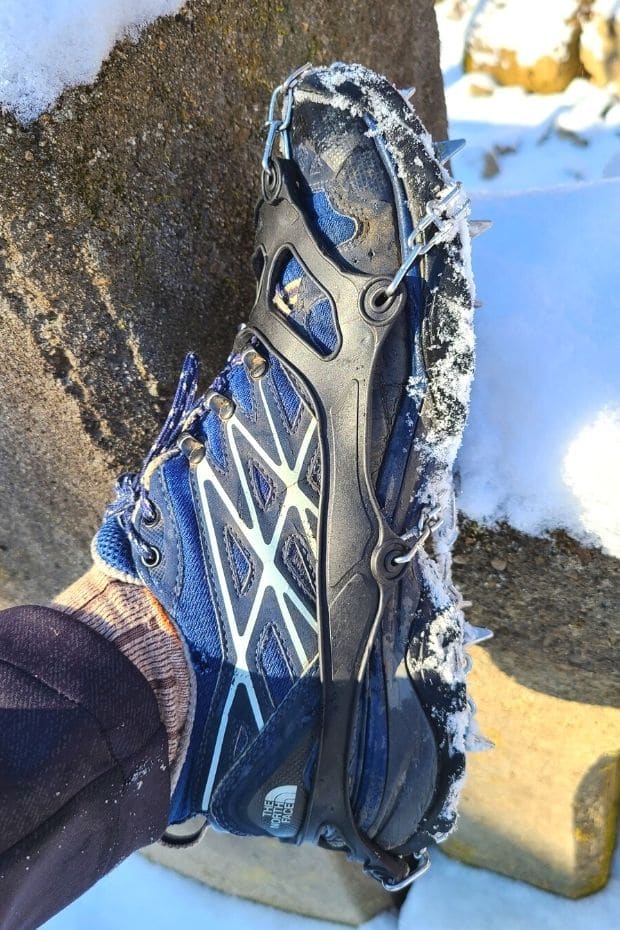
Heat Packs
These come in two forms – ones you stick to your body/in your shoes, or ones you put in your pocket to keep your hands warm. If you’re not used to the cold weather, I’d recommend both.
Here’s some Example Heat Packs.
Snow Gaiters
These will stop snow getting into your shoes and stop your toes from getting wet and frosty. They’re very useful in thick snow.
Here’s some Example Snow Gaiters.
Tissues
In the cold weather, your nose is likely to run a lot. A pack of tissues is really handy and you’ll need them for a whole load of things.
Food & Water
You probably won’t have a chance to buy food or water on the way, so make sure you stock up before leaving the city. Bring food for lunch, snacks, and at least 1 litre of water. I’d also recommend packing a bottle of Powerade, it really helps when hiking.
Although there is a rest station on the Seongpanak Trail that sells food and drinks, as well as a convenience store at the start of the Gwaneumsa Trail, don’t rely on them in case they’re closed.
I wouldn’t bring much else with you as any extra weight will make the hike more difficult. If you want to bring more, think about whether or not you really need it.
Winter Weather On Jeju Island 2025

Whilst mainland Korea has generally dry and sunny weather during winter, Jeju Island has much less predictable weather that can change suddenly. Here’s some details about winter weather on Jeju Island.
Temperature
Average daily temperatures are between 0 and 10 degrees Celsius, but can go below zero degrees. Hallasan is high above the sea-level, so will be considerably colder than the coast.
Rainfall
Winter is the driest season for Jeju Island and Korea and there is an average of 9-10 days of rain per month. However, as it’s so cold, this can fall as snow.
Wind
There can be strong winds on Jeju Island during winter that will make you very cold. Wrap up when walking along the coast and certainly if you hike Hallasan in winter.
Clouds
The weather on Jeju Island changes quickly and there can be cloudy skies one minute and then clear skies the next. You’ll often see clouds forming around the peak of Hallasan and I’ve noticed they tend to hang around the west coast more than the east coast.
Overall, the weather during winter on Jeju Island is generally cold, but not as cold as the rest of Korea. It’s also mostly dry with a few showers or snow. There are plenty of sunny days, but it’s not guaranteed and you’ll see big changes in the weather on some days.
Tips For Hiking In Korea In 2025
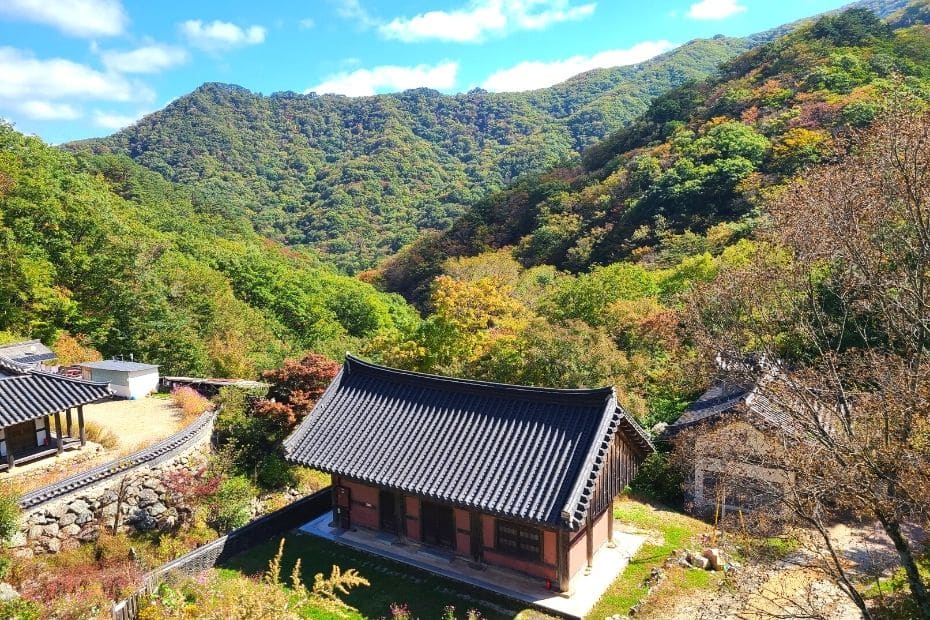
Whatever time of year you go hiking, here are some crucial tips that will make your hiking experience much more enjoyable, safer, and comfortable.
1: Pack light, pack right, and pack bright. Remove unnecessary items from your backpack and only bring the essentials (water, snacks, raincoat, sunglasses, suncream, etc.). And to fit in with the other hikers, and for safety, get a bright backpack and hiking clothes.
2: Plan your hike. Check your transportation options, check for route closures, and figure out when you will start and finish your hike. Be prepared for the time and energy you’re going to invest in your hike.
3: Prepare for the weather. Mountains have a climate of their own, and clouds, wind, rain, and snow can all appear from nowhere and change the conditions of your hike severely. Depending on the season you are hiking in, be prepared for the worst (but hope for the best).
4: Look after your body. Hiking can be tough and work a lot of muscles you’re not used to using. Stretch before and after the hike (and a bit at the peak, too). Go slow and steady if you need to. And make use of the toilets when you see them as you might not see another one for hours.
5: Have fun on the way. Hiking is a fun experience and the goal is to enjoy the journey, not the destination. Stop, look around your surroundings, and take in the unique sights, sounds, and smells on the way. It’s not a race.
For a full list of my best hiking tips, check out my article with 21 Top Korean Hiking Tips.
What To Do On Jeju Island
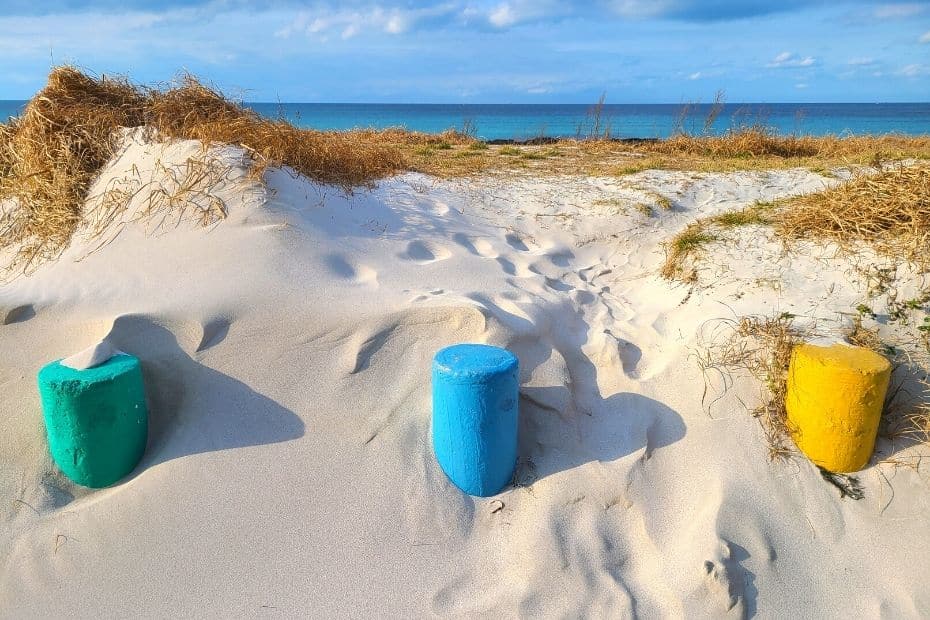
Jeju Island is one of my favourite places to travel in Korea and has so many unique things to offer. There’s always something to do.
You can ride a horse, trek around the island, experience a range of unique Jeju Island dishes, explore hundreds of cafes and bars, stroll through flowery fields, see inside a lava tube, learn in dozens of museums, shop till you drop, journey under the sea in a submarine, scuba dive, visit a traditional village, and so much more on Jeju Island!
Here’s a great Jeju Island Winter Itinerary to help you plan what to do for the rest of your time in winter. Although it could also be used any other time of year, too.
As there’s so much to do on Jeju Island, it features several times on my South Korea Bucket List, which has 50 of the most unmissable activities to do when you’re in Korea.
How To Hike Hallasan In Winter FAQs
Finally, here’s a few FAQs about hiking Hallasan in winter, in case you need more help planning.
Does It snow on Hallasan in winter?
Yes, there is often snow on Hallasan Mountain during winter. The top of Hallasan is almost 2,000 metres above sea level, meaning it is colder than on the coast. There is usually snow around the top of Hallasan and can be seen on lower slopes, too.
Is it safe to hike Hallasan in winter?
It is certainly safe to hike Hallasan in winter as long as you follow the rules and prepare for the hike. If the conditions are too severe, certain courses can be closed during winter to prevent problems. The weather conditions on Hallasan can change suddenly and hikers should be prepared for poor visibility, strong winds, and deep snow. However, it can also be clear and sunny when hiking.
Do you need a guide to hike Hallasan in winter?
No, you don’t need a guide to hike Hallasan in winter. The various courses in Hallasan National Park are well signposted in Korean and English and the routes are well marked. Planning your route, transportation, and equipment in advance will certainly help you avoid many problems on the day.
Can you hike to the peak of Hallasan Mountain in winter?
Yes, you can hike to the peak of Hallasan Mountain via the Seongpanak Trail or the Gwaneumsa Trail. These trails will take you to Baengnokdam Lake, the lake that rests at the top of this ancient volcano. However, these trails may be closed in winter due to adverse weather conditions. Check if it is safe to hike on the day of your hike. You’ll also need to make a reservation to hike these trails.
Is it difficult to hike Hallasan in winter?
Yes, hiking Hallasan in winter is difficult, mostly due to the cold weather, snowy terrain, and poor visibility that might be present. However, most people in a reasonably fit condition should be able to hike to the peak without any trouble. The hike takes all day and hikers should be prepared. Hike at a comfortable pace and you will reduce the difficulty.
Liked This? Pin It For Others
If you enjoyed reading this article, then please share this with your friends on Pinterest.
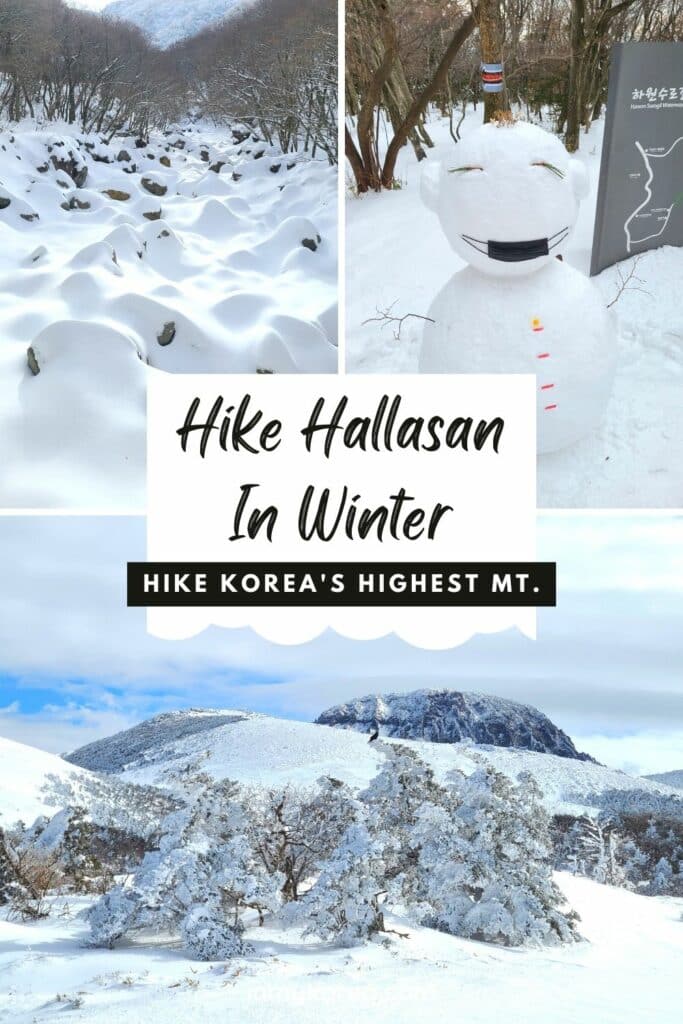
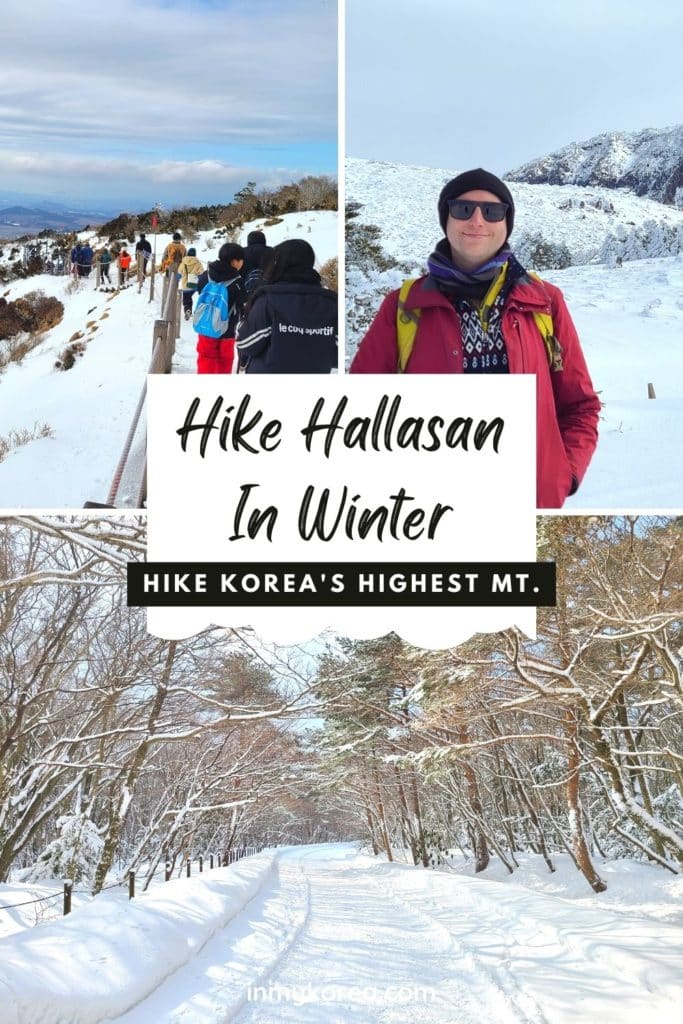
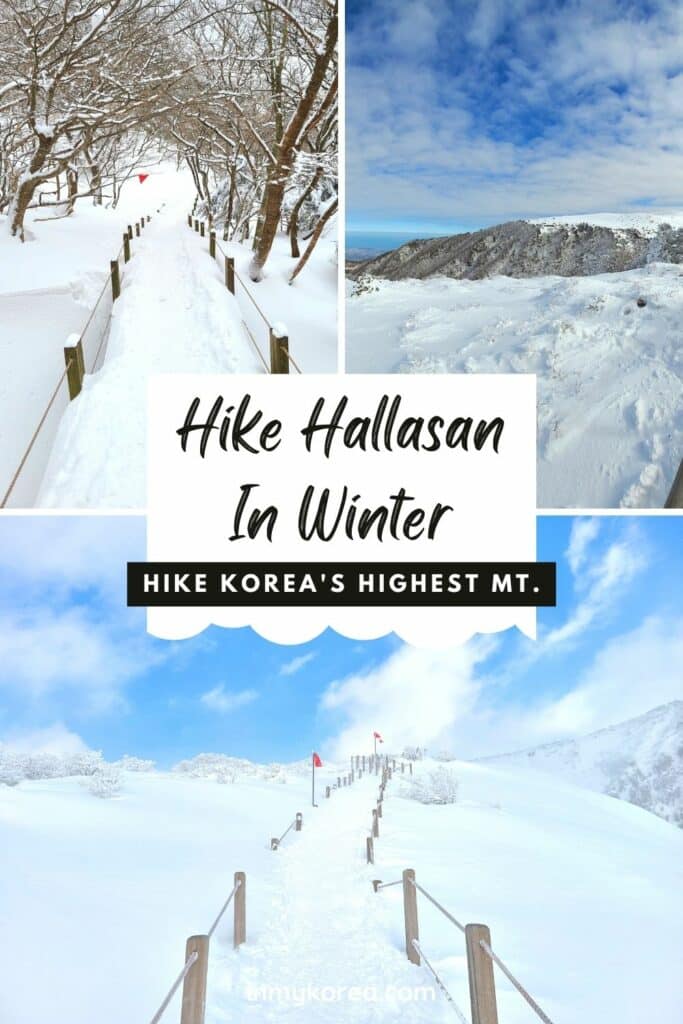


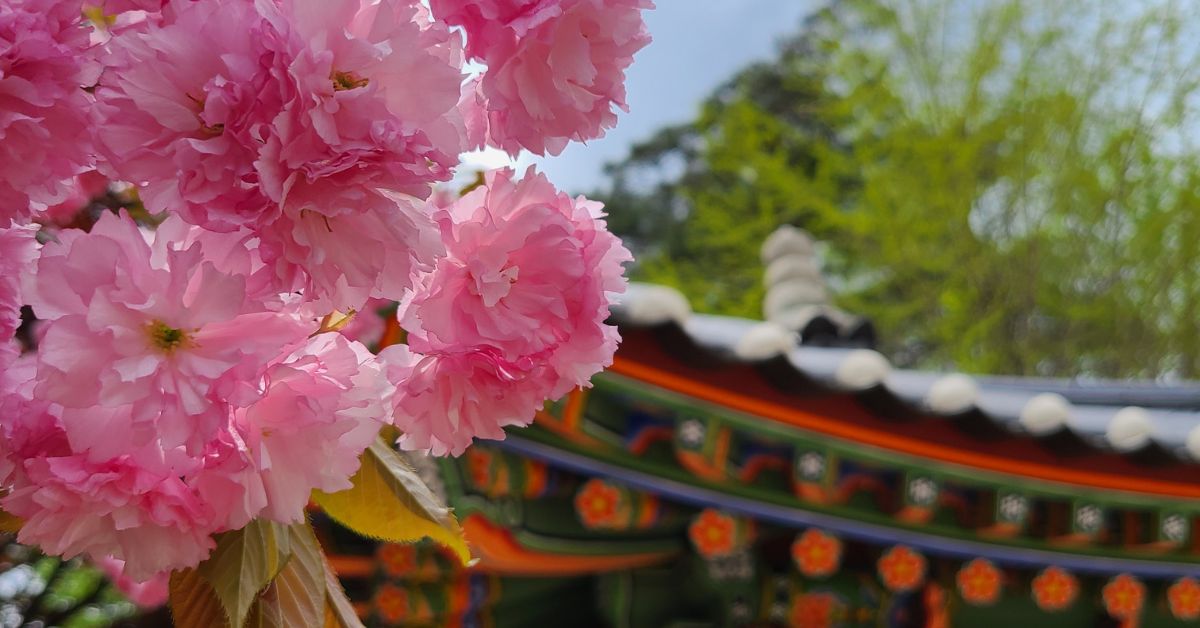



Dear Joel,
I am Serene. Thank you for your informative page which help me truly understand the hiking trail on Hallasan National Park. Me and my husband will be visiting Jeju this December, we both are nature lover but not ready for difficult hike in snow.
I need aome advice from you:
1. Can we drive and park near Eoseungsaengak Trail Entrance and hike to Eorimok Trail and return to our car after we reach the split road to Yeongsil Trail.
2. Then we return and park at Yeongsil Trail the next day and hike till South Cliff Fork before returning to collect our car.
Is my plan feasible? Thank you.